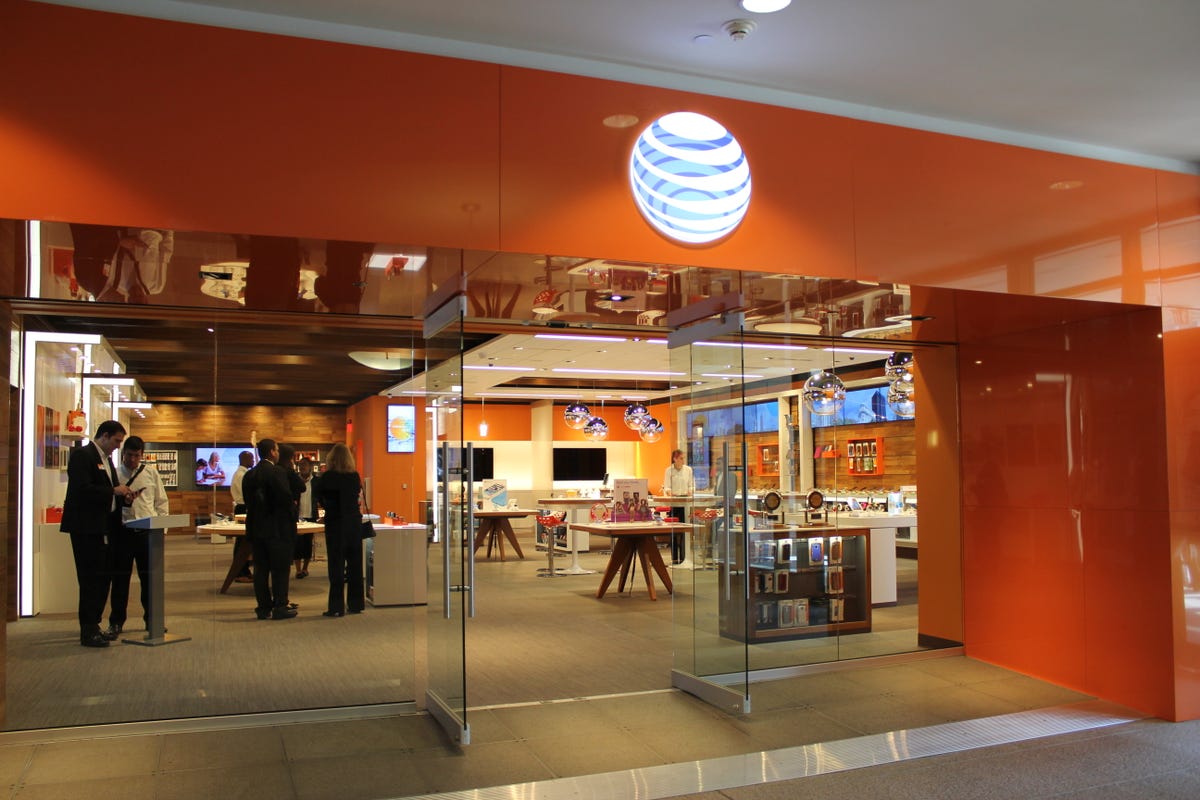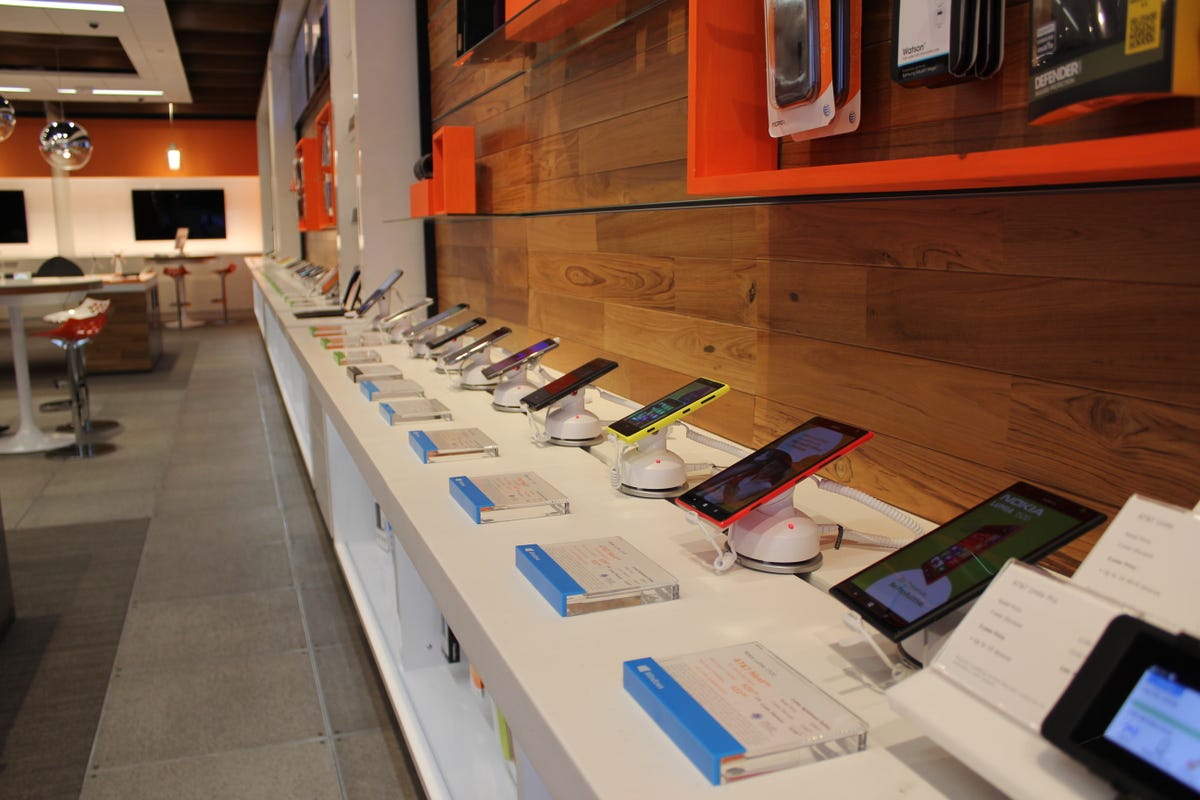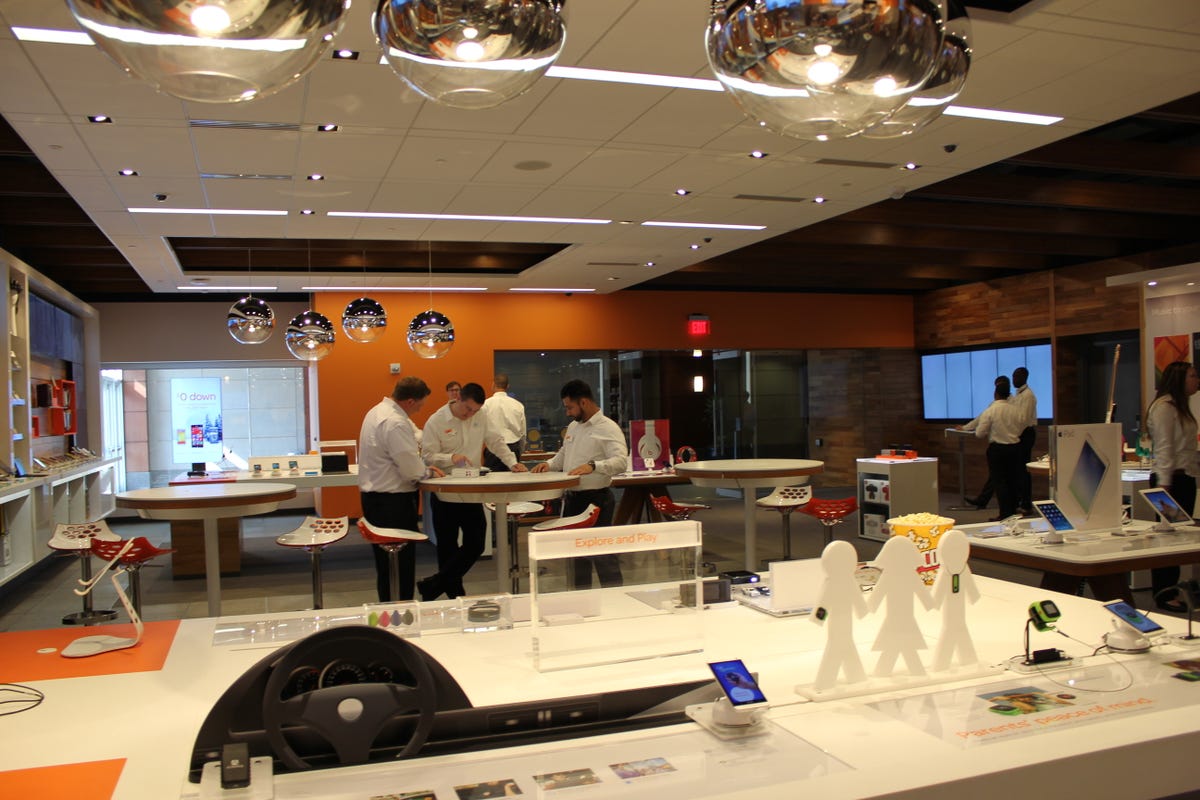
Roger Cheng/CNET
ATLANTA — AT&T wants its stores to earn the same reputation for quality as the Ritz-Carlton hotel chain, which prides itself on offering five-star service.
That goal would have been laughable less than two years ago, when Consumer Reports called AT&T the worst wireless provider in the country. But more recently, AT&T has climbed atop many industry satisfaction surveys and has garnered accolades such as a J.D. Power award for top customer service among wireless carriers.
Part of AT&T’s secret: a radical shift in the way that the carrier — and its retail president, Paul Roth — approaches its stores.
Instead of just selling handsets and phone plans, Roth wants AT&T’s 2,000 retail outlets to tout the benefits of connected devices and services through “experiences.” And Roth has at his disposal a number of “lab” stores where he and his team get to tinker with store details from layouts to fixtures, including something as minor as whether the base of podium should be white or chrome.


Roger Cheng/CNET
“We’re maniacal about that,” he said in a March interview with CNET.
The attention to detail comes as AT&T, like rival Verizon Wireless, works to revamp its retail stores and the industry as a whole grapples with a maturing smartphone market and declines in the percentage of phones actually sold at carrier stores.
While a majority of the 27.4 million smartphones it sold last year were purchased at an AT&T store, the company wants to further goose sales growth by pushing other Internet-connected gadgets, such as smartwatches and tablets.
For consumers, this means the conversation switches from which phone you want to buy to how a phone, watch, home, and car could work together to make your life easier. It isn’t simply about picking up a phone and paying for it; it’s about having a salesperson walk through different products and services, Roth says.
“Retailers are trying to find ways to add value to the transaction and turn it more into an interaction,” said NPD analyst Stephen Baker.
Minding the store
That may be, as Baker notes, a common approach in the consumer electronics industry, but it’s definitely a different way of thinking for AT&T.
The transformation of its retail strategy came after AT&T asked itself a simple question: Does retail exist in the future?
Related Links
- Verizon makes retail push with enhanced ‘destination store’
- AT&T goes on the offensive with cheaper family plans
- Galaxy S5 launch: No lines, but preorders look strong
- AT&T swings to profit as it feels the heat from T-Mobile
“The answer is yes, but it’s very different,” Roth said.
It’s a question likely on minds across the industry. In the 12 months that ended in February, 61 percent of all smartphones sold were purchased through a carrier store, down from 69 percent two years ago, according to NPD. Baker said he expects the decline to continue this year as consumers shop more online and at large retail chains such as Walmart, which sell prepaid phone services.
Countering that trend is its family of lab stores, one of which is located in the lobby of AT&T Mobility’s headquarters here. At first glance, it looks like any typical carrier store in a shopping mall.
And on Mondays, such as the one on which I visited, it acts as a functioning store with inventory and cash — the exception being that all the customers are AT&T corporate employees.
The rest of the week, the retail team tests out different ideas, or tweaks the look of displays, often behind closed curtains.
Roth, who has run the retail group for more than five years, was eager to share details about the new concept store. The glass entrance, for instance, is framed with orange, a call back to the hipper, younger vibe of Cingular, which was rebranded to AT&T after a series of mergers between regional telcos.
For the store, Roth and his team opted to remove the AT&T name, sticking with the blue globe logo unveiled in 2007. They believe that symbol is recognizable enough to stand alone now. The store is highlighted with reclaimed teak, borrowing a touch from Starbucks, alongside splashes of orange and white.


Roger Cheng/CNET
“We wanted something to feel surprising, but familiar,” he said.
Inside the 2,900-square foot space were “experience” areas, such as a round table ringed by music accessories, all surrounding a guitar centerpiece. A miniature drive-in theater helped demonstrate a mini projector that can be hooked up to your smartphone. Roth said that AT&T hired someone from Nike to help choose the props used to “better tell a story.” (The company declined to name the individual).
At the back of the store was a demonstration of AT&T’s U-Verse home Internet and TV service, as well as its Digital Life connected home business, which allows you to remotely control things like your door locks or lights via a smartphone or tablet. Against one wall was the carrier’s full phone lineup. A few smaller circular bar tables in the center of the store provided a place for employees to talk over the devices with their customers.
What you won’t find: cash registers or sales counters.
See what’s up at AT&T’s ‘lab’ store (pictures)






+7 more
It’s part of AT&T and Roth’s plan to improve the retail experience by making it less about the transaction, and more about providing customers with relevant information before and after their purchases.
AT&T isn’t alone in this strategy. Verizon in November unveiled a large in the Mall of America in Bloomington, Minn., and has been opening a number of smaller “smart stores” in select locations throughout the US focusing more on experiences and a higher level of service.
The latest incarnation of AT&T’s store, dubbed the “Store of the Future” concept, debuted at this lab in July and then went public in August. Since then, AT&T has opened or renovated 15 stores to carry that look and feel. Other design elements, like the removal of cash registers and counters in favor of mobile iPad checkout systems, have made their way to other stores (a retail tactic copied from Apple).
The order and placement of the products you see at your local AT&T shop? Roth likely determined all of that at the lab store.
The plans is to roll out the Future Store concept to all of AT&T’s stores, though Roth didn’t give a time frame for when that would happen.
Attitude vs. aptitude
Many of the changes were in play as far back as five years ago, when AT&T opened up the lab stores to figure out what worked in retail. Today, there are multiple facilities, including one in Milwaukee, and another Arlington Heights, Ill., equipped with heat sensors on the ceiling to determine traffic patterns. AT&T’s flagship store on Chicago’s famed Magnificent Mile started showing off some of the new retail elements in August 2012.
Shortly after taking over in the retail group in November 2008, Roth began hiring employees not just for their technical aptitude, but also their sales attitude. In the world of retail, that seems like a no-brainer, but AT&T was just getting started with its transformation.


Roger Cheng/CNET
Where Ritz-Carlton has its “greenbook” guide for quality service, AT&T hands out a little blue book titled “Our Retail Promise” to store employees. The book includes reminders like giving a “warm, friendly, and genuine” greeting to customers as they walk in the door and answering all of the customers’ questions before they leave the store.
Roth pointed to two “hero” tables where AT&T highlights marquee products. One of those tables is always reserved for Apple and its iPhone and iPad lineup (“Apple has been a good partner to us,” he says.) The other table offers a display for Beats Music, a mobile streaming service that launched in February that’s exclusively tied to AT&T’s wireless service.
What gets highlighted on that one hero table is entirely up to AT&T, Roth said. He noted that handset manufacturers have tried to buy out the marquee shelf space, but AT&T has declined.
“The store is not for sale,” he said.
Even as the elements of the lab store continue to trickle down through AT&T’s retail network, Roth continues to tinker with the look, including figuring out that podium base. (It’s currently a dull chrome, but he says he plans on playing around with it).
In April, the store will start showing phones with the Isis mobile payment service downloaded onto the device. Isis, a joint venture between AT&T, Verizon, and T-Mobile, was created with the intent of turning your phone into a wallet. Isis is a big priority for the company, with AT&T Mobility CEO Ralph de la Vega calling it a significant driver of growth in the future.
Roth said he sees a chunk of the store eventually dedicated to the cellular-connected car. In addition, more of the store space will be devoted to apps and experiences tied to your mobile device. The reason is simple: “It’s all pushing the concept that the phone is a remote control for your life.”



